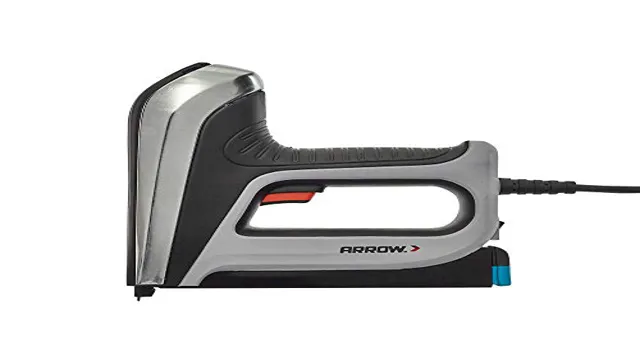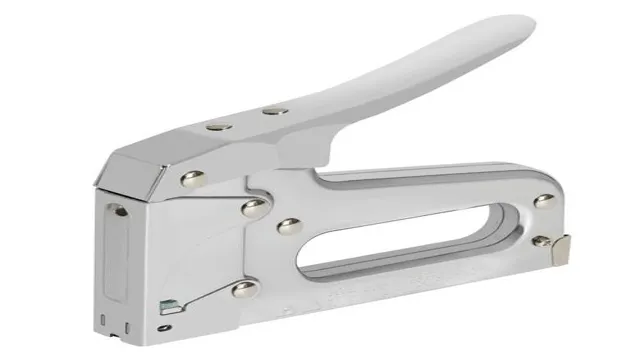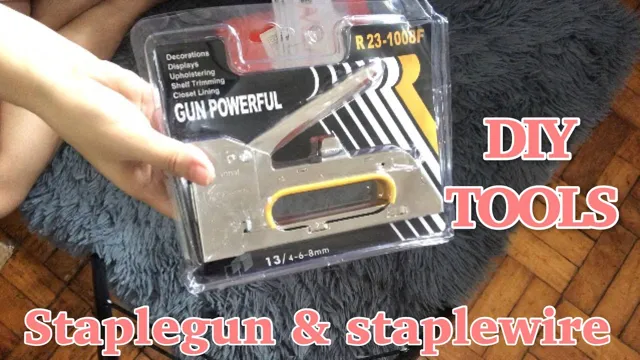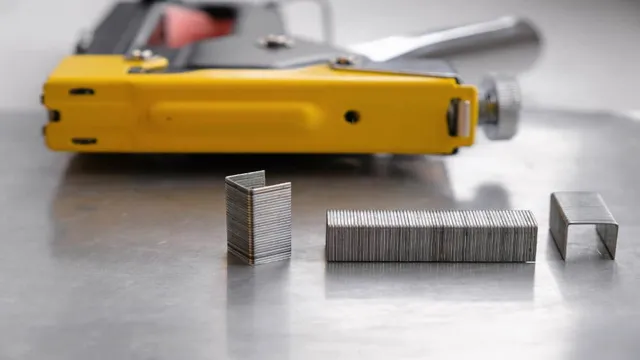
Staple guns are some of the most versatile tools that every homeowner and DIY enthusiast must-have. They come in handy for a wide range of projects, from fastening upholstery to fixing wooden frames. However, one of the key factors that you need to consider before using a staple gun is its staple size.
Staple sizes are not created equal, and using the wrong staple size can lead to frustration and shoddy results. So, how do you determine the right staple size for your staple gun? In this blog post, we will explore tips and tricks on how to choose the ideal staple size for your project, ensuring that your work turns out neat and professional-looking.
Understanding Staple Sizes and Types
If you own a staple gun, you may have wondered how to know what size staples you should use. Staple sizes are generally measured in length and width, and can fluctuate between brands and types of staple guns. Before choosing staples, take into consideration what project you are working on and what type of material you will be stapling.
For example, a staple gun designed for upholstery may require longer and thicker staples than a standard staple gun for paper. It is also important to note that some staple guns may only work with certain sizes or types of staples, so be sure to refer to your user manual or ask for advice if unsure. Investing in a variety pack of staples can also be useful for future projects and experimentation.
Ultimately, choosing the right staple size and type can make a big difference in the success of your project and the durability of your staples.
Types of Staples
Staples are an essential item in offices and schools, but did you know that there are different types and sizes of staples? Understanding staple sizes and types can help you choose the right one for your specific needs. The most common staple size is the standard or 26/6 staple, which can hold up to 20 sheets of paper. However, for thicker documents or materials, you may need a larger staple such as a 23/13, which can hold up to 250 sheets.
There are also different types of staples for different purposes, such as chisel point staples that penetrate paper easily, round wire staples that hold thicker materials, and flat wire staples that offer a bigger holding area. It’s important to choose the right size and type of staple to ensure a secure and clean fastening without damaging the materials. So next time you need to staple something, consider the size and type that will best fit your needs, and you’ll be sure to get the job done right.
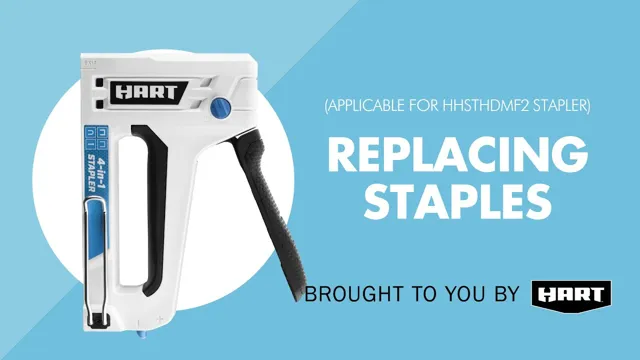
Staple Size Measurement
Staple Sizes When it comes to stapling, choosing the right staple size and type is essential to ensure a strong and secure hold. The size of a staple is determined by the wire gauge and length, and different staple sizes are suitable for various materials and thicknesses. Smaller staples, such as 26/6, are ideal for paper and lightweight materials, while larger staples, such as 23/10, are better suited for thicker materials like cardboard.
It is crucial to choose the right staple size to avoid jamming and ensure a professional look. Additionally, there are various staple types, including standard staples, heavy-duty staples, and specialty staples designed for specific applications. By understanding staple sizes and types, ensuring successful stapling tasks becomes easier and more efficient.
Factors that Affect Staple Size Selection
When it comes to choosing the right staple size for your staple gun, there are several factors to consider. The first thing you need to do is check the manufacturer’s recommendations for staple size, as using the wrong size can cause damage to your device or potentially jeopardize your safety. Next, you should take into account the thickness of the material you will be stapling.
Thinner materials require thinner and shorter staples, while thicker materials require longer and thicker staples. Additionally, the type of material being stapled is important, as some materials require staples with more holding power, such as hardwood or dense fabrics. Finally, consider the specific project you are working on and the purpose of the staples.
For example, if you are stapling a decorative fabric to a wall, you may want to use smaller, less noticeable staples. Overall, taking the time to carefully consider the above factors will ensure that you choose the right staple size for your project and ensure a successful outcome.
Size of Material to be Stapled
When it comes to selecting the right staple size, there are several factors to consider, one of which is the size of the material you’re stapling. The material’s thickness and density will determine the length and gauge of the staple required. For instance, if you’re attaching papers together, a standard staple size will suffice.
However, if you’re stapling thicker materials like cardboard, a longer and thicker staple may be necessary to ensure the staple goes all the way through the material and holds it together firmly. Conversely, using a larger staple size on thin materials risks damaging and deforming them. Therefore, it’s essential to consider the material’s size and type to determine the appropriate staple size needed.
Additionally, you’ll need to consider the stapler’s capacity and the type of staple it uses. Thus, proper consideration of all these factors ensures a smooth and successful stapling process, avoiding any potential mishaps or damages.
Depth of Penetration
When selecting the right staple size for your job, the depth of penetration is an important factor to consider. The depth of penetration refers to how deep the staple will go into the material being stapled. Different materials require different depths of penetration to ensure a secure hold.
For example, thicker materials will require a deeper penetration than thinner ones. The type of staple gun being used will also affect the depth of penetration, as some guns have more power than others. You will want to ensure that the staple size you choose not only matches the material thickness but also the power of the staple gun to ensure a strong and secure hold.
Taking the time to choose the right staple size for your job based on all the factors that affect it will ensure that your finished product looks professional and is built to last.
Type of Material Being Stapled
When selecting the right size staple, it’s important to consider the material being stapled. The thickness and density of the material can greatly affect the effectiveness of the staple. For instance, thick and rigid materials like cardboard or leather may require longer staples with wider crown widths to hold securely.
On the other hand, softer materials like fabric or paper can be easily damaged by larger staples and may require shorter ones with smaller crown widths. Furthermore, it’s important to consider the size and shape of the staple itself. Certain materials may require staples with longer legs or sharper points to penetrate properly.
Ultimately, taking the time to select the proper staple size based on the material being stapled can ensure a strong and secure hold without causing unnecessary damage or discomfort.
Tips for Choosing the Right Staple Size for Your Project
If you’re new to using a staple gun, one of the most important things you need to understand is how to choose the right staple size for your project. Using the wrong size staple can create a lot of problems, from jamming your staple gun to damaging your materials. So, how do you know what size staple to use? The first step is to consider the thickness of the materials you’ll be stapling together.
Thinner materials like paper or fabric will require smaller staples, while thicker materials like wood or plastic will require longer staples. Another consideration is the strength of the staple. If you’re working on a project that will be under a lot of stress, like a piece of furniture, you’ll need to use a stronger staple than you would for something like a bulletin board.
Ultimately, choosing the right staple size comes down to trial and error. Try a few different sizes on a scrap piece of material and see which one works best before you start your actual project. Remember to always use the right size staple for the job to ensure a clean, secure result.
Experiment with Different Sizes
Choosing the right staple size for your project can make a big difference in its overall appearance and durability. Experimenting with different sizes can help you determine which size is best for your specific project. For example, if you’re stapling together a large stack of paper, you may want to use longer staples to ensure they don’t pull out.
On the other hand, if you’re stapling together a small booklet, shorter staples may be more appropriate. It’s also important to consider the thickness of the material you’re stapling – thicker materials may require larger staples to hold securely. By experimenting with different staple sizes and materials, you can find the right combination to make your project look and function its best.
Consult Staple Gun Manual and/or Manufacturer’s Website
When it comes to choosing the right staple size for your project, the first and most important thing to do is consult with your staple gun manual or the manufacturer’s website. Different staple guns are designed to handle different sizes and types of staples, so it’s essential to ensure that you’re using the right size for your particular application. Using the wrong size of staple can lead to jams, misfires, and damage to your materials, so taking the time to do your research is critical.
Your manual or website should provide you with all the information you need to select the appropriate staple size for your project, including length, gauge, and material composition. By following these guidelines, you can ensure that your staples will provide the holding power you need without compromising the integrity of your materials. So always remember, before you begin your project, make sure to check your manual or manufacturer’s website to find the perfect staple size for your needs.
Ask Experts for Recommendations (e.g. in Hardware Stores)
When it comes to choosing the right staple size for your project, it can be overwhelming with all the different options available. One tip is to ask experts for recommendations. If you’re at a hardware store, talk to someone in the tools or fasteners department.
They can provide insight into which staple size would work best for your specific project. A second tip is to consider the material you’re working with. Thicker materials may require a larger staple size, while thinner materials will need smaller staples.
It’s important to choose the right size to ensure a secure hold without damaging the material. Another consideration is the staple gun itself. Make sure the staple size you choose is compatible with your staple gun.
Always err on the side of caution and do a test run on a scrap piece of material before beginning your project. That way, you can make any necessary adjustments before committing to the final product. With these tips in mind, you’ll be sure to choose the right staple size for all your future projects with confidence.
Conclusion: Selecting the Right Staple Size for Your Staple Gun
Now that you’re armed with the knowledge of staple gun sizes, you won’t be left feeling ‘staple-tied’ when it comes to choosing the right staple for the job. So, whether you’re securing upholstery, wiring or building furniture, remember to match your staple size to the material thickness, and you’ll be ‘stapling’ like a pro in no time!”
FAQs
What are the different sizes of staples available for a staple gun?
Staple guns typically use staples that range from 1/4 inch to 1 inch in length. The size required depends on the thickness of the material being stapled.
How can I determine the appropriate staple size for my project?
You can determine the appropriate staple size for your project by measuring the thickness of the material you need to staple. Use a ruler or caliper to get an accurate measurement and choose the corresponding staple size.
Can I use the same size staples in any staple gun?
No, not all staple guns are built to accommodate the same sizes of staples. Make sure to read the manufacturer’s instructions or packaging to determine which size staples are compatible with your staple gun.
Are there specialty staples available for certain projects?
Yes, specialty staples are available for certain types of projects, such as upholstery or crafting. These staples often have unique shapes or sizes to better suit the task at hand.
Can using the wrong size staple damage my project or staple gun?
Yes, using the wrong size staple can damage both your project and your staple gun. Staples that are too small may not hold the material securely, while staples that are too large can damage or even break the material being stapled.
Do different staple sizes require different loading procedures?
Yes, different staple sizes may require different loading procedures for your staple gun. Be sure to read the manufacturer’s instructions or packaging to determine the correct way to load your particular size of staples.
How do I store and organize staples of different sizes?
One way to store and organize staples of different sizes is to use a labeled storage container with compartments for each size. Alternatively, some staple guns have adjustable staple guides for quick and easy size changes.
